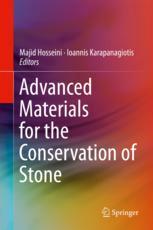

Most ebook files are in PDF format, so you can easily read them using various software such as Foxit Reader or directly on the Google Chrome browser.
Some ebook files are released by publishers in other formats such as .awz, .mobi, .epub, .fb2, etc. You may need to install specific software to read these formats on mobile/PC, such as Calibre.
Please read the tutorial at this link: https://ebookbell.com/faq
We offer FREE conversion to the popular formats you request; however, this may take some time. Therefore, right after payment, please email us, and we will try to provide the service as quickly as possible.
For some exceptional file formats or broken links (if any), please refrain from opening any disputes. Instead, email us first, and we will try to assist within a maximum of 6 hours.
EbookBell Team

5.0
30 reviewsThis book identifies novel advanced materials that can be utilized as protective agents for the preservation of stone. The innovative solutions to stone conservation presented here result in increased sustainability, reduced environmental impact, and increased social and economic benefits. It provides an overview of recent trends and progress in advanced materials applied to stone protection. It also explores the scientific principles behind these advanced materials and discusses their applications to diff erent types of stone preservation efforts. Essential information as well as knowledge on the availability and applicability of advanced nanostructured materials is also provided, with focus placed on the practical aspects of stone protection. Th e book highlights an interdisciplinary eff ort regarding novel applications of nanostructured materials in the advancement of stone protection. It provides insight towards forthcoming developments in the fi eld. Advanced nanostructured materials are designed and developed with the aim of being chemically, physically, and mechanically compatible with stone. Advanced materials for stone conservation that are characterized by several functional properties are considered in this book. These include the physico-chemical, protective, and morphological properties, eco-toxicity, and mechanisms of degradation. The authors present a thorough overview of cutting–edge discoveries, detailed information on recent technological developments, breakthroughs in novel nanomaterials, utilization strategies for applications in cultural heritage, and the current status and future outlook of the topic to address a wide range of scientific communities.